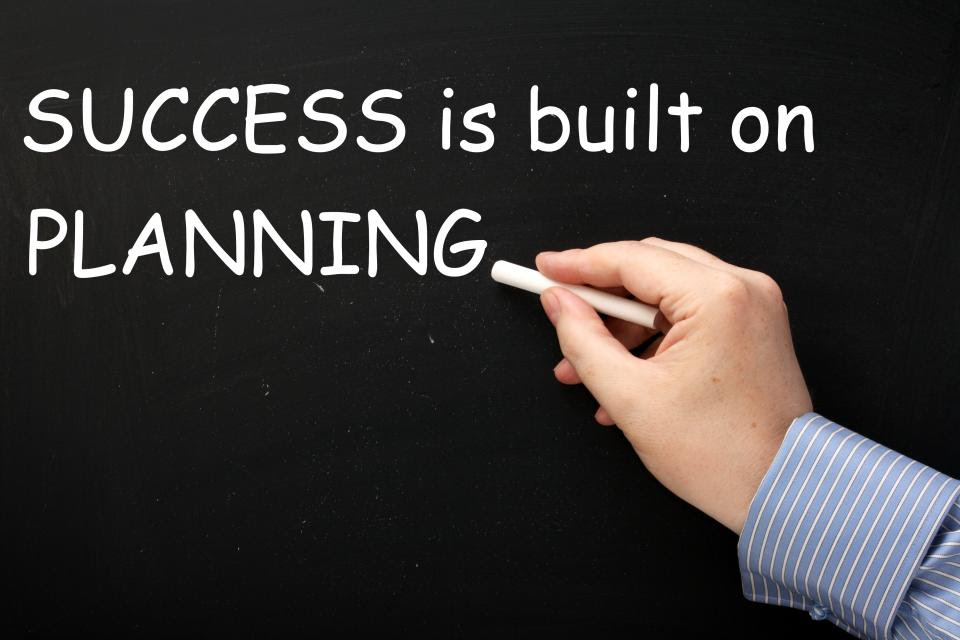I hear it all the time.
“We need to (increase programs/build a new building/eliminate a waiting list) and we need money to do it.”
Yes, but the FIRST thing you need is a fund raising plan. 
When you have a big goal, the best way to ensure that you’ll reach it is to figure out how you’ll get there. A well-thought-out strategy will ensure your success. And a fund raising plan will make it happen.
You’ll never reach that big goal if you wing it or try to figure it out on the fly. No shooting from the hip. No ‘make it up as you go.’ Your goal is too important to leave it to chance and besides, people are depending on your nonprofit. Lives are at stake here!
And yet, so many people don’t plan.
They jump in and try things without putting much thought into it, which isn’t very smart and can actually be pretty frustrating. They do the same things they’ve always done, then they’re disappointed when they get the same old results.
Here’s what happens when you operate that way:
- You’re always behind. You’re a Last-Minute Lucy doing things at the 11th hour like grant proposals and appeal letters, knowing they’re not your best work.
- You’re always looking for ‘new ideas’ for fundraising that works and hoping that the next time you throw spaghetti at the wall, something will stick.
- You never quite meet your goals, which means you don’t quite raise enough money to meet your budgetary needs.
- You’re working ALL the time (evenings and weekends, too) and you hate it, but you don’t know what else to do.
All that stuff leads to burnout. Yuck.
So.

Fundraising planning is part art and part science. The science includes answering the questions of who, what, when, where, and how much. The art is more about choosing strategies from the intersection of your personal strengths, the organization’s assets, and your best opportunities.
Before you start on those practical pieces, set yourself up for victory with these 8 planning steps for a super successful year of fundraising. These 8 principles will get your head in the right space and help you avoid some common pitfalls in the planning process.
8 steps to get ready to get ready to write your annual fund raising plan
1. Carve out time to do it right. I know you’re busy and it’s tough to find time to do anything, but you can’t afford to mess this up. Set aside enough time to do the evaluation and prep work, goal setting, and calendaring. Don’t try to rush through this. Give yourself enough time to think it through. A little extra time spent now will pay off BIG later. If you must, carve out a half day a week for a month. Or set aside a couple of hours a day for a week. Whatever it takes, just do it.
2. Get it in writing. This is simple – if it’s not in writing, it’s not real.Seriously, it’s not a plan if it’s in your head. When your plan is written down, it’s easier to share with volunteers and Board members, and it’s easier for everyone to work from. It’s easier to evaluate your progress with a written plan. And if you’re like me, you can’t remember what you had for lunch yesterday, much less how you thought you were going to raise an additional $25,000 without writing it down. (If you need help with this, download my 1 Page Fundraising Plan template).
3. Evaluate first. Don’t just do what you’ve always done. Evaluate every past fundraising activity with a critical eye. Make decisions based on numbers and hard data, not how you feel. This means looking at your results from the past couple of years to evaluate what worked and should be repeated versus what flopped and should be dropped.
4. Set goals first. Start with your program goals to see how much good your nonprofit will do during the year then price it out to see what it will cost. THAT’S how much money you should aim to raise. Don’t do it backwards by just trying to see how much you can raise then figuring out how to spend it. Trust me, you’ll never raise enough money that way and you’ll never change all the lives you really want to change.
5. Leverage your assets. Always play up your strengths. What have you got to work with? Name recognition? Large donor base? Loyal volunteers? Programs that save lives? Find a way to make the most of them when you’re raising money. If you don’t think your nonprofit has assets like those, look harder. Everyone has something. And then include something in your plan to strengthen and build your assets.
6. Consider other community activities. Don’t plan in a vacuum. Take into consideration what’s happening in your community that can impact your fundraising, like large companies closing, new businesses coming to town, other nonprofits running large capital campaigns and so forth. These activities will impact your donors and their ability to give to you, so consider them as you plan.
7. Plan to get out of your office. Don’t get sucked into “introverted fundraising” mode where you try to do everything from behind your computer. Plan to get face to face with donors and supporters. You can raise some money from your desk, but your best chances of raising BIG bucks are when you spend time in person with your best donors.
8. Make the numbers work. Double-check your math to make sure the strategies you choose actually add up to the 3 main goals your fundraising plan needs:

- Total dollars you need to raise
- Number of donors you need to renew
- Number of new donors you need to acquire
In other words, don’t just say “we want to renew 50% of our current donors” without thinking about how it will happen. Note exactly which activities will accomplish that. Will you do it through the mail? Email? Phone calls? An event? Lay it all out in detail and leave nothing to chance.
And remember that everything you do is a strategy to get you to these three goals.
Paying attention to these 8 steps will help you put together a fund raising plan that will definitely raise more money for your worthwhile mission.
When you raise more money, you can change more lives. Isn’t that what it’s all about?






Leave A Comment